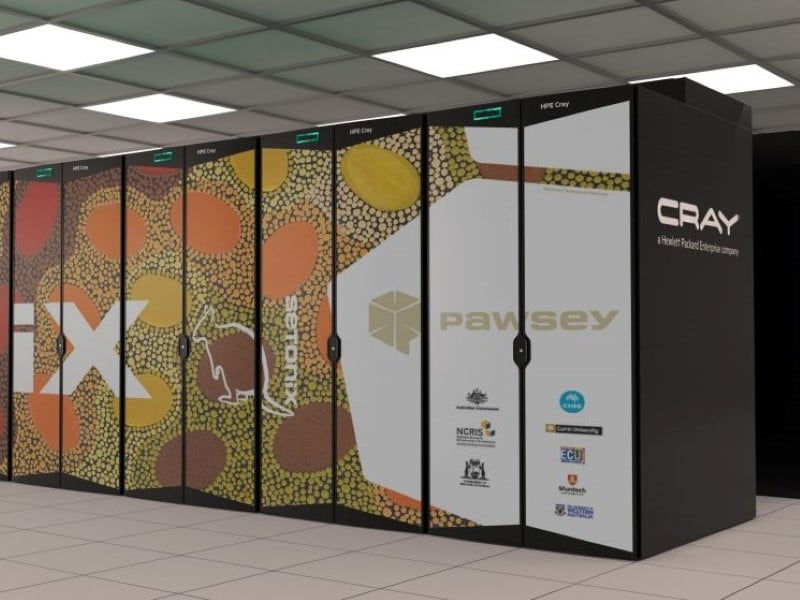Australia’s top science body is ramping up pressure on the federal government to commit to a multi-billion dollar, decade-long overhaul of the country’s “oversubscribed” and near end-of-life supercomputers.
The Australian Academy of Science has used its pre-Budget submission to call on the government to set out a long-term national strategy and roadmap for high-performance computing and data (HPCD).
It is the latest push by the group to secure greater funding for national digital research infrastructure (NDRI), having flatly rejected a scant offer of $100 million as part of the NDRI investment plan last month.
“The notion allocation of $100 million to the delivery of HPCD capability… is insufficient to maintain Australia’s current HPCD capabilities, let alone prepare to meet the evolving need of Australia’s research sector,” the Academy said in January.
“This limited funding envelope does not provide room for the much-needed expansion of HPC capabilities to meet continually increasing demand, such as developing a national exascale capability.”

The Academy estimates that the government, along with the private sector and academia, will need to invest $2 billion over the next decade both upgrading existing facilities like Pawsey and deploying next-generation infrastructure.
“Australia’s existing supercomputers are oversubscribed and rapidly reaching the end of their lifespan, and there is no plan for the next generation of computing, or to replace the HPCD infrastructure Australia relies on,” the pre-Budget submission states.
Setonix, a Cray supercomputer housed at the Pawsey Supercomputing Research Centre in Western Australia, is Australia’s most powerful supercomputer, ranking 28 on the top 500 list.
Australia’s other in-country supercomputers, including the CSIRO’s Virga and National Computational Infrastructure Australia’s Gadi, fall outside the top 50, sitting at 72 and 103, respectively.
Exascale supercomputers – supercomputers capable of at least one exaflop floating point calculations per second – are considered a particular blind spot for Australia, with other developed countries already moving towards this horizon.
“Exascale computing has emerged as a new benchmark for global competiveness – 1,000 times faster than Australia’s existing petascale supercomputers,” the Academy said, adding that such supercomputers are “no longer sufficient”.
“This leap in capability enables unprecedented precision in climate modelling, AI development and advanced research, making exascale infrastructure essential for nations to address critical challenges and maintain technological leadership.”
The Academy said that next-generation HPCD infrastructure is an “urgent priority” and an area where the “government can invest in now to build Australia’s resilience and competitive edge”, while waiting on the findings of the root-and-branch R&D review.
“Without a national strategy… Australia risks falling behind on global achievements, limiting our ability to innovate and tackle emerging societal challenges and putting our future prosperity and security at risk,” it added.
The Academy has been pushing for a national plan since before the release of last year’s NDRI strategy, which is expected to be followed by investment plans later this year. The work is being led by the Education department.
In a brief released last February, the group said that if Australia wants to “remain competitive and provide services and benefits to all Australians” it should urgently consider future investments.
“Our existing supercomputers won’t last beyond the end of this decade – and we need to start planning for the next generation now,” it said, describing existing HPCD infrastructure as “moderate”.
“A national strategy backed by at least one exascale capability is essential to secure Australia’s sovereign capability and enable science and research to meet national and regional priorities.”
Quantum computing was dismissed as viable alternatives to supercomputers for scientists in the near term, requiring further development “before it can be considered a viable technology for Australia’s computing capability”, as was cloud computing.
Other priority areas in the pre-Budget submission include the creation of an Australian Institute for Earth System Science to co-ordinate the “actionable climate intelligence” used to inform government decision-making.
“Over the past two decades, funding has focused on applied research to develop tools and advice, neglecting the fundamental earth system science needed to advance climate intelligence,” the Academy said.
“This has led to fragmented efforts, uncoordinated data systems, and critical knowledge gaps. Many climate models and projections rely on decade-old research, increasing the risk of maladaptation and poor policy decisions.”
Do you know more? Contact James Riley via Email.

